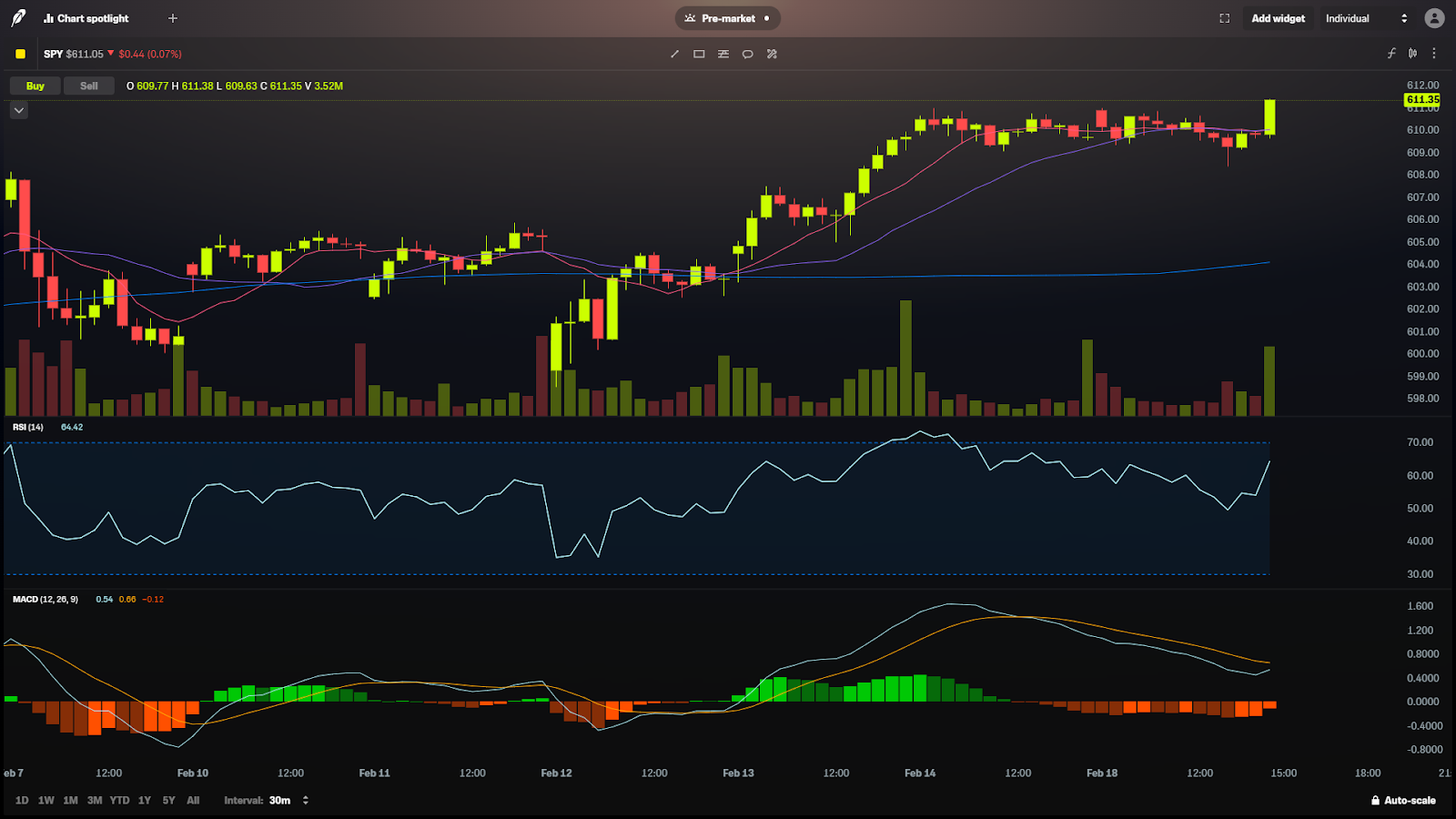
Can You Day Trade $SPY With a Small Account?
The Yearly Small Account Challenge
Every year, I embark on a personal challenge: transforming a meager $30 into a substantial sum through disciplined SPY options trading. This isn’t about chasing overnight fortunes; it’s about demonstrating the power of consistent effort, strategic thinking, and rigorous risk management, even with severely limited capital. Over time, this project has evolved beyond mere profit-seeking; it’s become an exploration of innovative strategies and investment approaches. This blog post will delve into my methodology, track my progress, and share key takeaways from this ongoing endeavor.
The Allure of Small Account Trading
Many aspiring traders believe significant capital is a prerequisite for options trading. While substantial funds undoubtedly offer advantages, I aim to prove that a focused strategy and disciplined execution can unlock the potential of SPY options, even with a modest starting point. This challenge isn’t about achieving astronomical returns overnight; it’s about cultivating consistent growth, acquiring valuable market knowledge, and navigating the complexities of the market.
More importantly, this project seeks to inspire others, particularly those with limited capital. By demonstrating that profitable options trading is attainable with minimal investment, I hope to dispel the myth that significant wealth is a necessary condition for market participation.
This challenge is driven by a desire to push boundaries and discover the limits of what’s possible. Can a small account truly generate perpetual income? Can it evolve into a self-sustaining investment engine? These are the questions that fuel my ongoing exploration.

A Perpetual Motion Portfolio
One of the most significant hurdles for small accounts is the inherent limitations of capital and the critical need for robust risk management. After four years of intensive research and experimentation, I believe I’ve stumbled upon a framework that addresses these challenges:
$30 Starting Balance
The cornerstone of this challenge. This initial capital will be used exclusively for options trading.
30% Profit Allocation
At the end of each trading session, 30% of any realized profits will be systematically allocated to a diversified portfolio of assets, including:
- SPY (S&P 500 ETF): For broad market exposure.
- REITs (Real Estate Investment Trusts): To diversify asset classes and generate income.
- Growth Stocks: High-growth companies with the potential for substantial capital appreciation (e.g., Tesla, Nvidia).
- Dividend Stocks: Companies with a history of consistent dividend payouts (e.g., O, ADC, JEPQ, YBTC).
- Bitcoin: To gain exposure to the cryptocurrency market.
A Daily Contribution
Regardless of trading performance, $1 will be invested daily into each of the aforementioned asset classes. This consistent contribution acts as a form of dollar-cost averaging, mitigating the impact of market volatility.
Uninvested Dividend Income
Dividends generated by the portfolio will be allowed to accumulate in the $30 trading account. This strategy aims to organically replenish trading capital and enhance the sustainability of the system.

Navigating the PDT Rule
The Pattern Day Trader (PDT) Rule applies to accounts with less than $25,000 in equity. Our starting balance is $30, so we fall squarely within this regulatory framework. The PDT Rule restricts the number of day trades within a five-day period to three.
While some brokers enforce this rule strictly, others offer options for bypassing it. I have chosen to bypass the PDT Rule for my trading activities. However, I strictly adhere to a maximum of three day trades per week to avoid potential account restrictions.
Account Type: Margin vs. Cash
I utilize a margin account for my investments, albeit without leveraging margin. This choice offers several advantages:
- Instant Access to Funds: Provides immediate access to investment proceeds, facilitating timely profit allocation and reinvestment.
- Options Trading Compatibility: Ensures compatibility with a broader range of options trading strategies, which may be restricted in some cash accounts.
The Rules of the Trade
My trading strategy is guided by a set of strict rules:
- Defined Risk: Risk management is paramount. I limit each trade’s risk to no more than 5% of the account balance. This involves careful position sizing and utilizing stop-loss orders to minimize potential losses.
- Profit Targets: I aim for 20-30% initial profit targets. While more significant gains are possible, I prioritize consistent, manageable profits over chasing unrealistic returns.
- Trade Duration: To minimize exposure to prolonged market fluctuations, I typically close positions within the first hour of the trading session.
- Focus on SPY: My trading universe is limited to the SPY ETF, the S&P 500 index fund.
- 0DTE/1DTE Options: I primarily focus on 0DTE (zero days to expiration) and 1DTE (one day to expiration) options due to their high theta decay and potential for rapid profit generation.
- Risk-Reward Ratio: I maintain a minimum risk-reward ratio of 2:1. This ensures that probable rewards significantly are no less than 50% of the inherent risks.
Daily Trading Strategy Overview
My daily approach involves a multi-faceted analysis:

- Sentiment Analysis: I begin each trading day by reviewing the CNN Fear and Greed Index (https://www.cnn.com/markets/fear-and-greed). I look for neutral or bullish sentiment, ideally identifying an increasingly positive trend. This provides a directional bias for my trades. This helps me identify trends in the market and know what to expect and choose a trade that follows the trend rather than flows against the trend. I start before market open by viewing this indicator. i am looking for the initial number and level of the sentiment of the investors. I will continue to monitor this throughout my session taking note of each change in the fear and greed index and noting if it is a greed change or fear change.

- Technical Foundation: I utilize a combination of technical indicators on SPY’s daily chart: the RSI 14, MACD, 9-period EMA, 21-period EMA, and the 200-period EMA. These tools help me gauge momentum, identify potential buy/sell signals and understand the stock’s current cycle. I may also use the VWAP and Bollinger bands to confirm resistance and support levels.

- Weekly Perspective: I trade the daily chart on a 10 minute periods. However, I trade with the context of the SPY weekly chart on a 30 minute period for a broader context. This helps me understand the current price’s relationship to the weekly high and low and pinpoint key support and resistance levels that might influence short-term price action.

- Precision Strike Selection: Strike price selection is crucial. I target strikes at the closest strong resistance to the 200 EMA or the weekly low, aiming for a delta between 0.35 and 0.40 on the options chain. This range represents a balance between probability and premium. If a suitable strike isn’t within this delta range, I refrain from trading, prioritizing probability and reasonable premium.

- Trade Execution and Management: My primary focus is 0DTE (zero days to expiration) or 1DTE (one day to expiration) options trades. Due to their short-term nature, these require vigilant monitoring. I set an initial profit target of 20-30%. If a strong, sustained uptrend develops, I may extend my target, leveraging theta decay to my advantage. Conversely, I adhere to a strict stop-loss discipline, exiting any trade that moves against me by 20-30% of my initial investment.
Current Portfolio Value

Key Takeaways and Lessons Learned
This challenge has underscored the critical importance of:
- Disciplined Execution: Consistent adherence to the trading plan is crucial for long-term success.
- Risk Management: Prioritizing risk control is essential for preserving capital and ensuring long-term sustainability.
- Continuous Learning: The markets are constantly evolving, and continuous learning is necessary to adapt and improve.
- The Power of Small Beginnings: Even with limited capital, it’s possible to achieve significant growth through strategic trading and disciplined investment.
Disclaimer:
This post reflects my personal trading journey and should not be considered financial advice. Past performance is not indicative of future results. Options trading involves substantial risk, and you could lose some or all of your investment.




